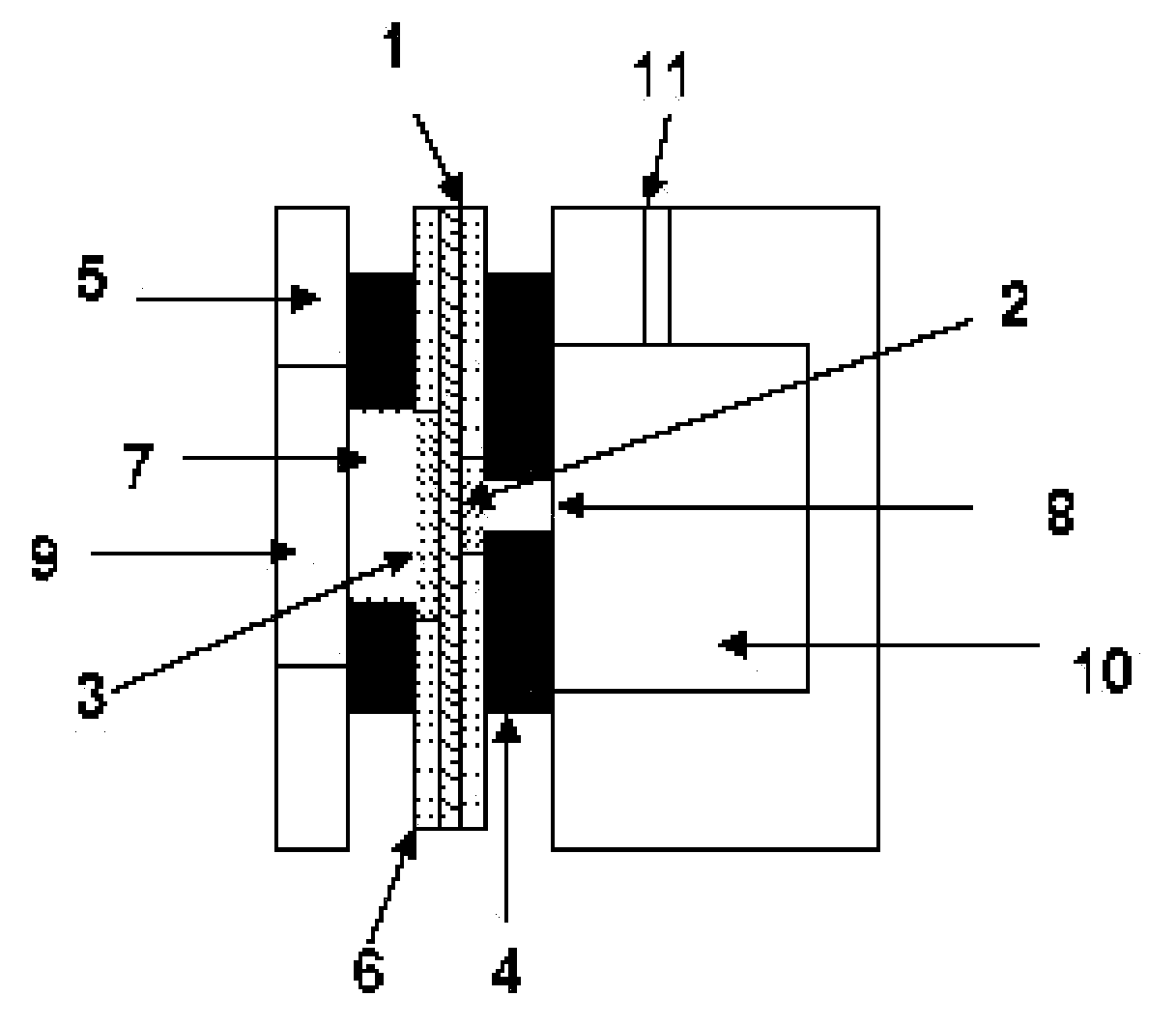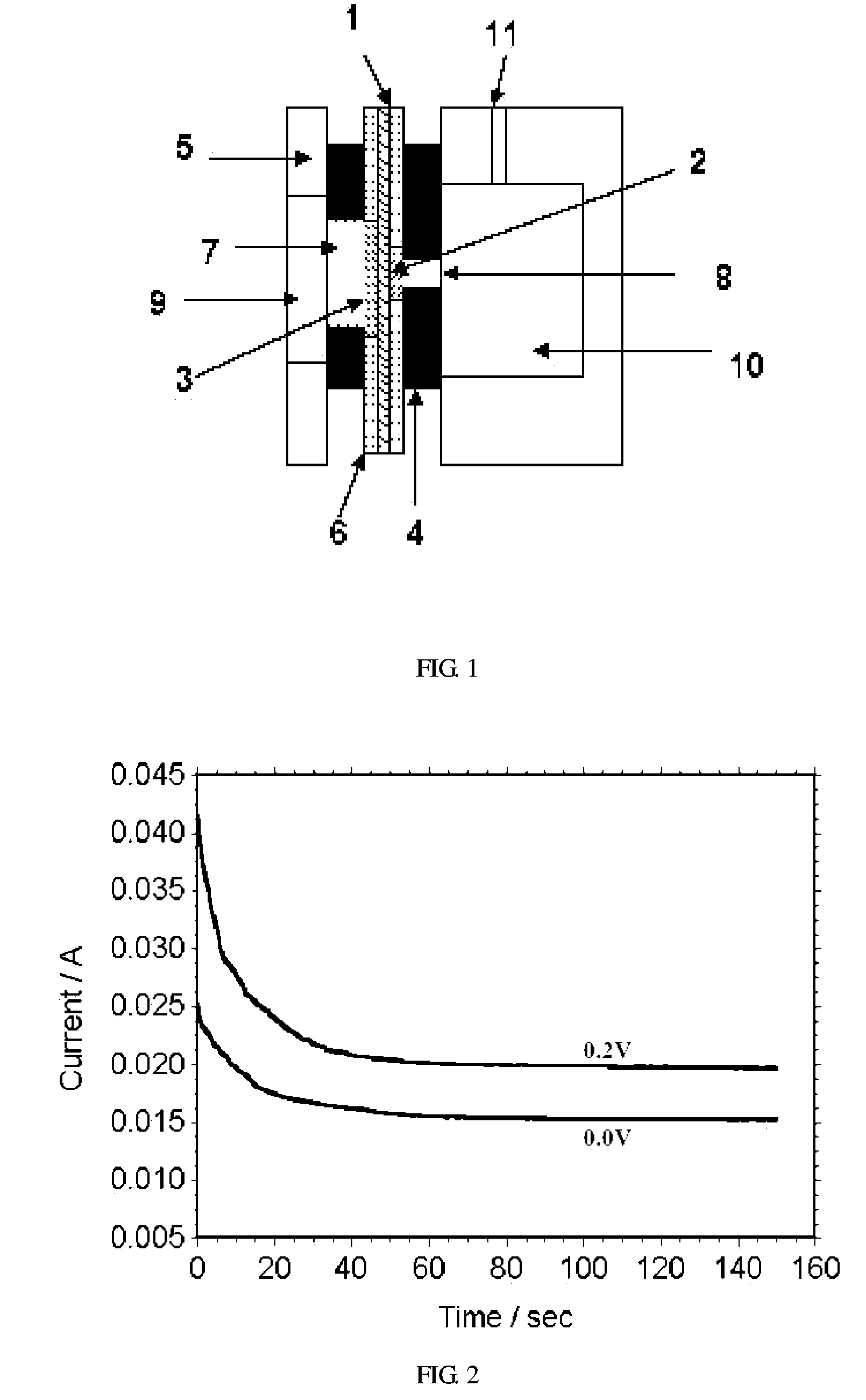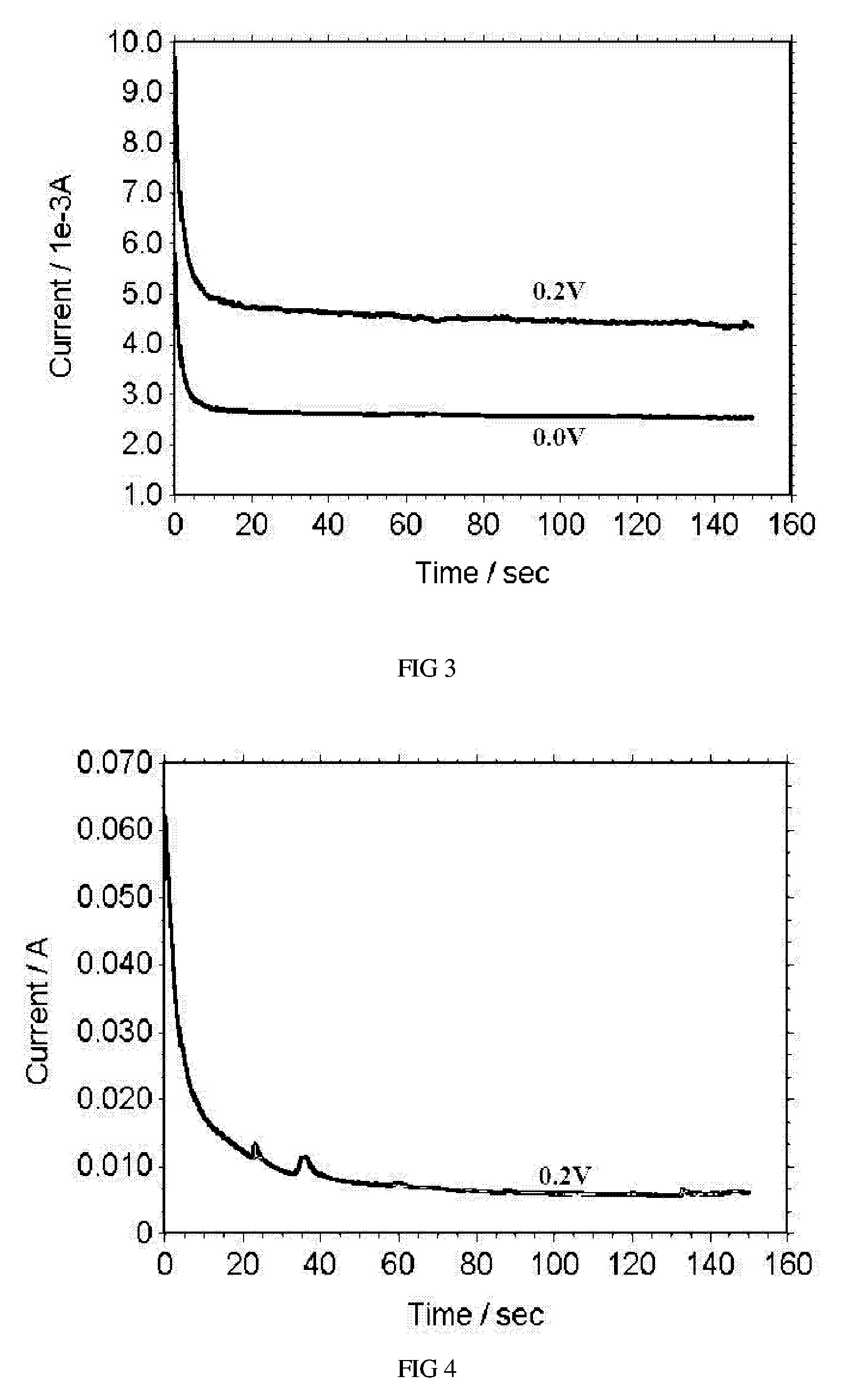A versatile electrochemical sensor for sensing fuel concentration in an aqueous solution
a fuel concentration sensor and electrochemical technology, applied in the field of electrochemical sensors, can solve the problems of methanol crossover in dmfcs, inability to design dmfc systems, and inability to meet the needs of dmfcs, etc., to achieve the effect of simple structure, enhanced sensor electrochemical reactions, and more versatility
- Summary
- Abstract
- Description
- Claims
- Application Information
AI Technical Summary
Benefits of technology
Problems solved by technology
Method used
Image
Examples
example 1
[0019] This embodiment serves to illustrate the principle of the electrochemical sensor in signal sensing by measurement the electro oxidation current of diffused methanol. FIG. 2 shows i-t curves of the electrochemical sensor at a fixed methanol concentration, in which the 0.0V applied voltage is for a passive operation mode while 0.2V is for the active mode. The two curves shown here are obtained at 20° C. using 1.0 M methanol solution. It can be seen that the methanol oxidation current at the start of the measurement is much larger than that after a period of time. This indicates that the methanol sensor has a quick response in sensing the presence of methanol. The current decayed almost exponentially and required some time (20-50 sec) to reach steady state for both active and passive operation modes. These values are comparable to those given by previous reports. Clearly, the active mode with a small applied depolarization voltage gave rise to a much larger current signal.
example 2
[0020] This embodiment serves to illustrate the capability of the electrochemical sensor in sensing concentration of an organic fuel solution other than methanol solution, such as formic acid solution. Formic acid has advantages of high safety and low crossover rate. It can be used as an alternative fuel for methanol. FIG. 3 shows i-t curves of the electrochemical sensor at a high concentration (6M) of formic acid solution, in which the 0.0V applied voltage is for a passive operation mode while 0.2V is for the active mode. The two curves shown here are obtained at 20° C. Clearly, the electrochemical sensor is not limited to be used with methanol fuel, but can also be applied to sensing a variety of organic fuel solutions.
example 3
[0021] This embodiment serves to illustrate the capability of the electrochemical sensor in sensing concentration of an inorganic fuel solution. Sodium borohydride has advantages of high hydrogen content and high electrochemical reaction rate. It can also be used as a fuel for membrane fuel cells. FIG. 4 shows an i-t curve of the electrochemical sensor working with 0.5 M NaBH4 aqueous solution under an active mode. The curve shown here is obtained at 20° C. It can be seen that the electrochemical sensor can also be applied to sensing a variety of inorganic fuel solutions, in addition to organic fuel solutions.
PUM
| Property | Measurement | Unit |
|---|---|---|
| DC voltage | aaaaa | aaaaa |
| DC voltage | aaaaa | aaaaa |
| voltage | aaaaa | aaaaa |
Abstract
Description
Claims
Application Information
 Login to View More
Login to View More - R&D
- Intellectual Property
- Life Sciences
- Materials
- Tech Scout
- Unparalleled Data Quality
- Higher Quality Content
- 60% Fewer Hallucinations
Browse by: Latest US Patents, China's latest patents, Technical Efficacy Thesaurus, Application Domain, Technology Topic, Popular Technical Reports.
© 2025 PatSnap. All rights reserved.Legal|Privacy policy|Modern Slavery Act Transparency Statement|Sitemap|About US| Contact US: help@patsnap.com



